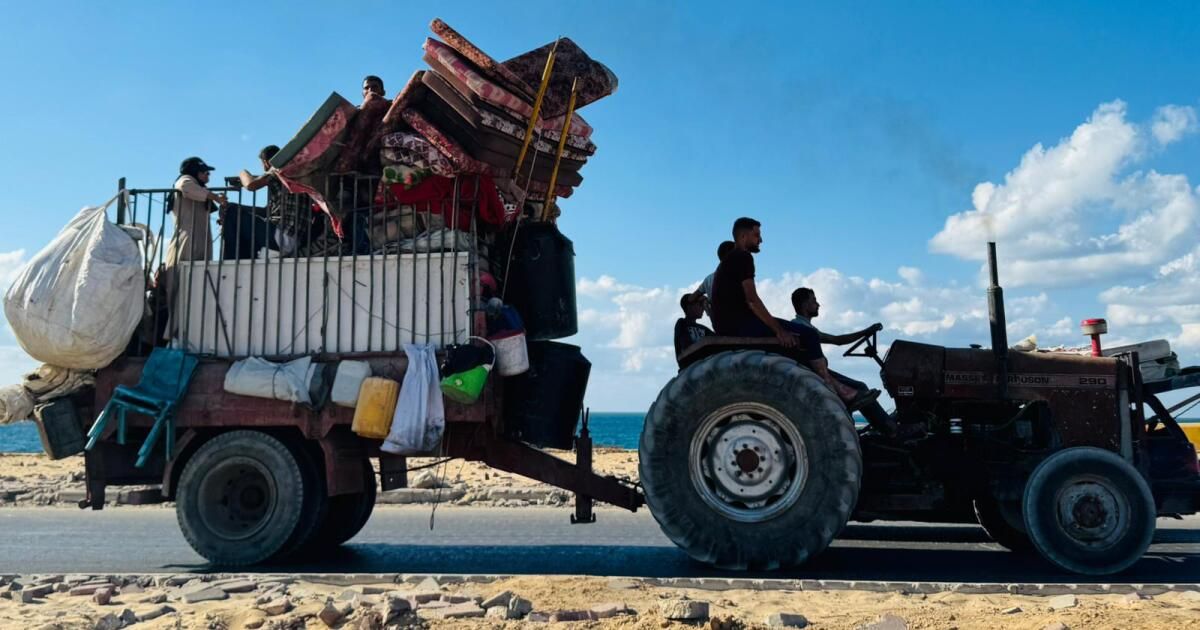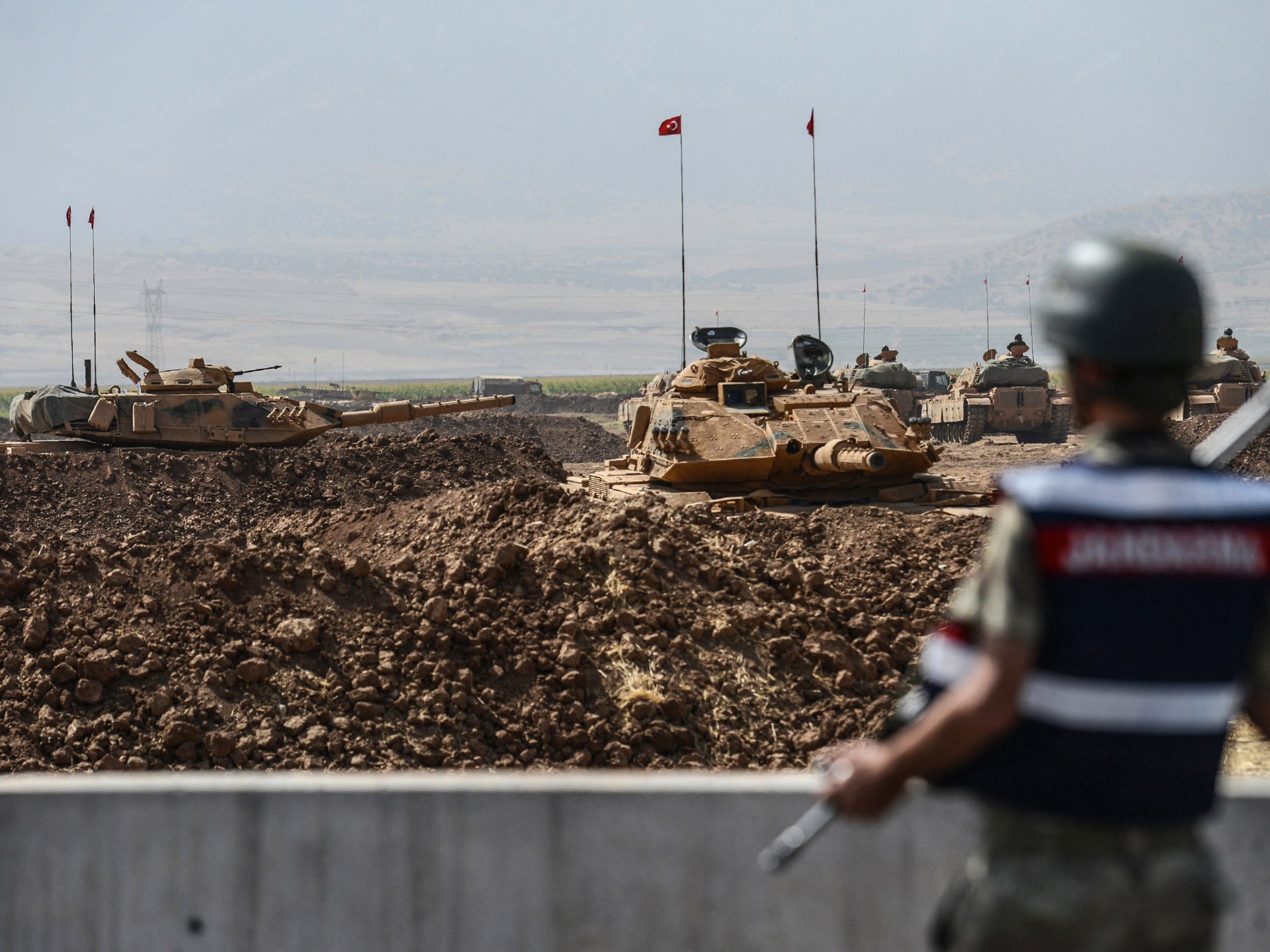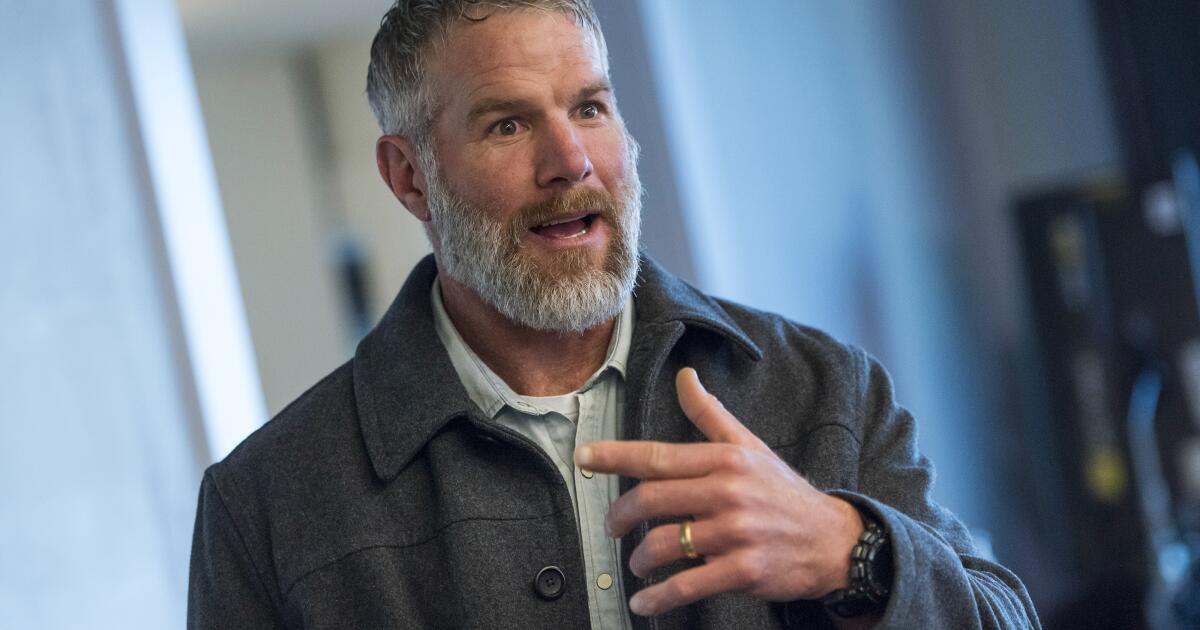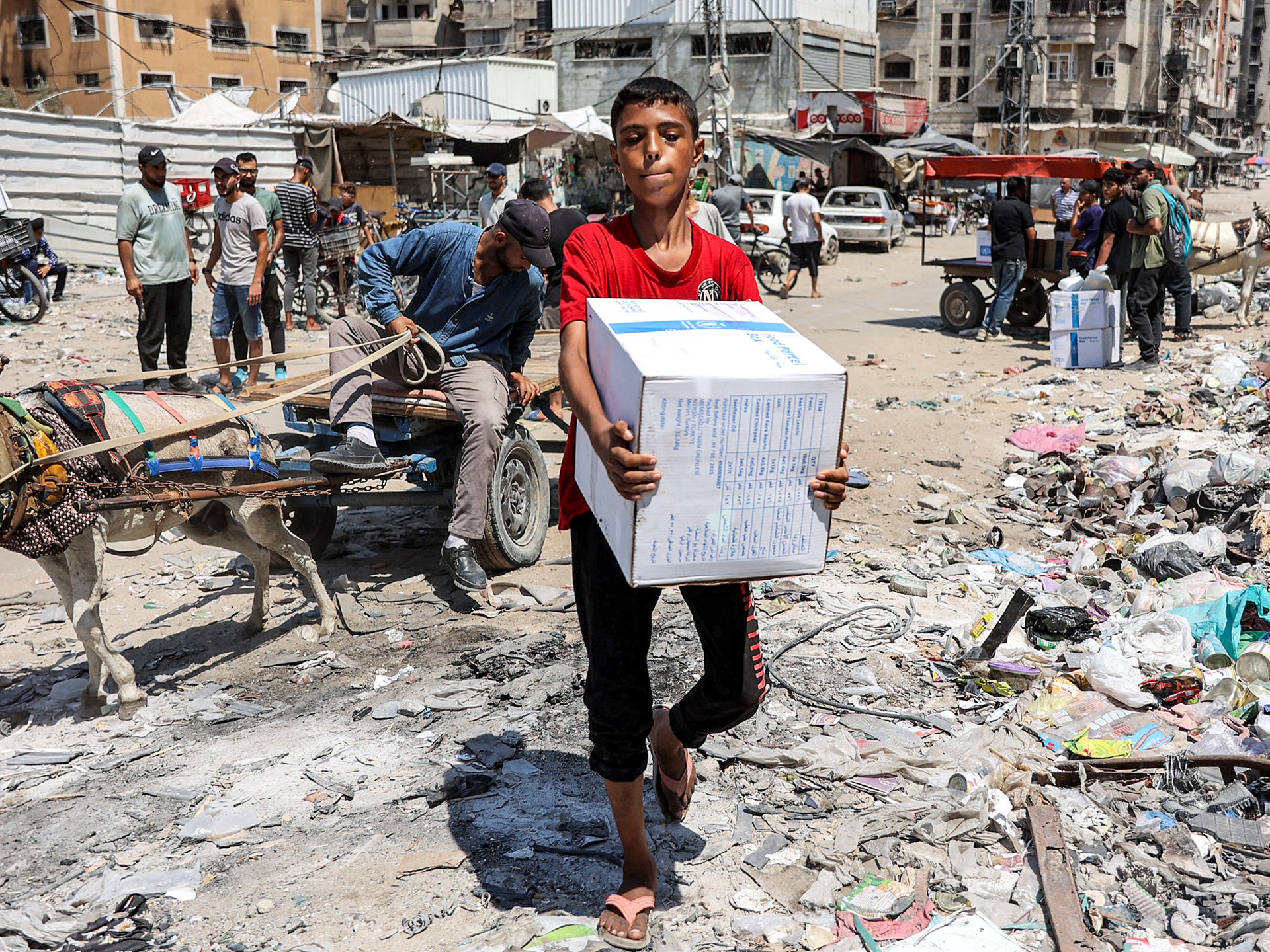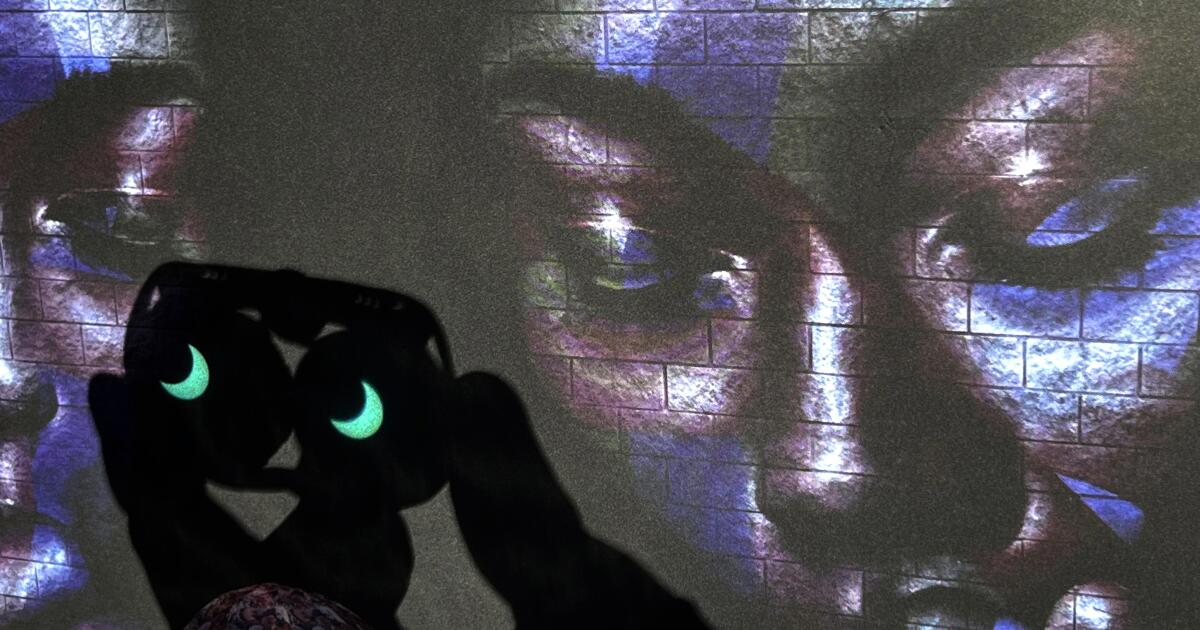JABALIYA, Gaza Strip — The trailer creaked under the weight of mattresses, blankets, tents, a gas cylinder, worn-out plastic barrels, burlap sacks of clothing, plastic chairs, gardening tools, various kitchen utensils and a toy tricycle – the collective belongings of Mohammad Abu Warda and his family.
Abu Warda, 34, pulled the ropes securing the load and hitched the trailer to his tractor. She looked for a moment at her mother, Bouthaina Warda, 60, who was braiding her daughter's hair, then turned to look at the coastal highway heading north toward Gaza City.
It was time to go home.
“The last time we took this road, we were escaping death,” Abu Warda said, tightening the rope with his hands as he tightened it once more.
“Today we are chasing what is left of life.”
Around them, others were embarking on a similar journey, piling whatever they had salvaged belongings onto whatever transportation they could manage. Donkey carts and tractors competed for space with larger pickup trucks and transport trucks, as diesel fumes mixed with dust and salty sea air.
Every few hundred meters, more people joined the Al-Rashid Highway from side streets, joining the slow deluge of hundreds of thousands returning home to see what was left – if anything – of the lives they had in northern Gaza.
The return home comes at a time of hope after two years of war. A decisive ceasefire remains in force between Israel and Hamas, with prospects for lasting peace. President Trump was heading to Israel in time for Monday's expected release of the last hostages held in Gaza, with Israel set to release hundreds of Palestinian prisoners and plans for an increase in aid to the famine-stricken territory.
Abu Warda had been displaced at the beginning of the war, when he and his family left their home in Jabaliya, a few kilometers north of Gaza City, in November 2023; They returned 14 months later in January, before Israel's intense attack on Gaza City and the northern part of the enclave last month forced them to leave again.
This time, Abu Warda – whose uncles and cousins had braved the 16-mile return journey from Khan Yunis, in central Gaza, to Jabaliya the previous day – knew it would be a bitter return home.
Mohammad Abu Warda sits among the rubble in Jabaliya, where his family returned on Sunday.
(Bilal Shbeir / For The Times)
“Everything is gone. The house is destroyed,” he said.
Sitting in the trailer, Bouthaina Warda spoke in a small, somber voice.
“People keep saying we're going home. But home doesn't exist anymore,” he said. “We're just going to see what's left. A pile of rubble.”
Many of the 2.1 million people living in the Gaza Strip (which at about 140 square miles is less than a third the area of Los Angeles) face similar circumstances: Nearly the entire population has been forced to move in the past two years and more than 90% of homes have been damaged, according to expert estimates.
Some parts of the enclave are suffering from famine as a result of a months-long Israeli blockade, say the UN and other aid groups, which have also accused Israel of genocide. Israel denies the accusation and says it acted to destroy the Hamas militant group.
Meanwhile, the enclave's infrastructure, whether in healthcare, water or sanitation, has been devastated; especially in Gaza City, according to Asem Al-Nabih, spokesman for the Gaza City municipality.
“I can't explain to you the enormous amount of damage we're seeing,” he said.
He added that the Israeli army had deployed booby-trapped armored assault vehicles, which caused damage not only to above-ground structures but also to water wells, underground pipes and sewage pumps, not to mention roads.
“Our priority now is to get water and we have started clearing the main roads so that people can reach what is left of their homes,” he said. “But at the same time, we have lost most of our heavy and medium equipment in the last two years, so we can't do much to alleviate people's suffering.”
The war began on October 7, 2023, when Hamas-led militants attacked southern Israel, killing 1,200 people (two-thirds of them civilians, according to Israeli authorities) and kidnapping about 250 more.
In retaliation, Israel launched a massive military offensive that has killed more than 67,000 people, more than 3% of the enclave's population, according to Gaza's Health Ministry. Although he does not distinguish between civilians and combatants in his count, his figures are considered reliable and have been used by the United Nations and the Israeli military.
Abu Warda revved the tractor's engine, pushing it faster as he passed the structure of a seaside cafe where his family once stopped for tea and roast chicken during their weekend stays. Along the road were abandoned sandals, sun-hardened plastic water bottles, and broken toys—remnants of the exodus of months past.
With every kilometer the family approached Jabaliya, the landscape changed, with fewer tents, more ruins and more dust covering people's faces. Entire apartment blocks leaned on each other, like carelessly toppled dominoes.
Finally, six hours later, Abu Warda parked the tractor in front of a pile of worn masonry and rebar in Jabaliya: his home.
“I remember my window was there,” Abu Warda said, pointing to a hollow space between fallen concrete slabs.

A trailer contains the possessions of the family of Mohammad Abu Warda, who fled northern Gaza months ago to escape attacks by the Israeli army.
(Bilal Shbeir / For The Times)
A school notebook, dusty and worn, peeked out from the rubble. He took it out and shook the lid off. His son's name was still visible, written in red marker.
Abu Warda's sister, Amal Warda, 25, bent down and grabbed a handful of gray powder.
“This is why we came back,” he said quietly. “To touch the truth with our own hands.”
As the afternoon wore on, the family used rope found in a neighbor's yard to secure a tarp between two taller pieces of concrete. Abu Warda found an old metal teapot and lit a small fire with pieces of wood, then made tea, poured it into dented cups and handed it out.
A few neighbors and cousins emerged from equally destroyed ruins, exchanging greetings that sounded both joyous and fragile. Someone offered water. Another shared news about which wells in the area were still working, along with information about U.S. aid.
The children began to play, running through piles of rubble. Bisan, Abu Warda's 12-year-old niece, grabbed a stick and drew a picture of a house with four windows and a tree. He added his family standing outside, smiles on their faces. When the wind took it away, he took it out again.
“Gaza still breathes through its people,” said Amal Warda. “As long as people return here, life will also slowly return.”
In the evening, the sea breeze became cool. The family spread the blankets they had brought and slept under the tarp. Abu Warda looked towards the sky.
“I'm not sure what tomorrow will bring,” he said.
“But I do know one thing: Being here, even if it is in ruins, is better than waiting for news in a tent.”
Special correspondent Shbeir reported from Jabaliya and Times editor Bulos from Jerusalem.

